Last Updated on 15.08.2024 by hrushetskyy
If you’re wondering how long used tires last, remember the one and only essential thing—each tire’s lifespan is 10 years max. Most categories of tires will wear in 6 years. So, if you’re buying a tire that’s 5 years old, it will serve you 5 years more at most. Besides such factors as wear, tread depth, driving habits, and terrain that the tire was driving on, tire aging is as inevitable as us humans getting old. Let’s dive deep into the safe usage of used tires essentials and see how long used tires will last you in various conditions.
The average lifespan of used tires

Under normal operating conditions, storage, frequent rotations, and pressure maintenance, the tire can be used for up to 10 years. The manufacturer usually guarantees for 5-6 years that the tire will retain its characteristics if it lacks manufacturing defects.
The average lifespan of used tires varies significantly based on several factors. Typically, drivers cover between 12,000 to 15,000 miles per year, and a good-quality all-season tire generally lasts between three and five years. This means that if you purchase a used tire with significant tread remaining, you could potentially get a few more years of service out of it. However, it’s essential to consider the miles already driven on the tire and the original tread depth.
If a tire has much of its original tread depth and no significant damage, it might offer a remaining mileage of up to 40,000 miles. Nonetheless, always factor in the tire’s age and the conditions it has been exposed to, as these can significantly impact its remaining lifespan.
Key factors affecting used tire longevity
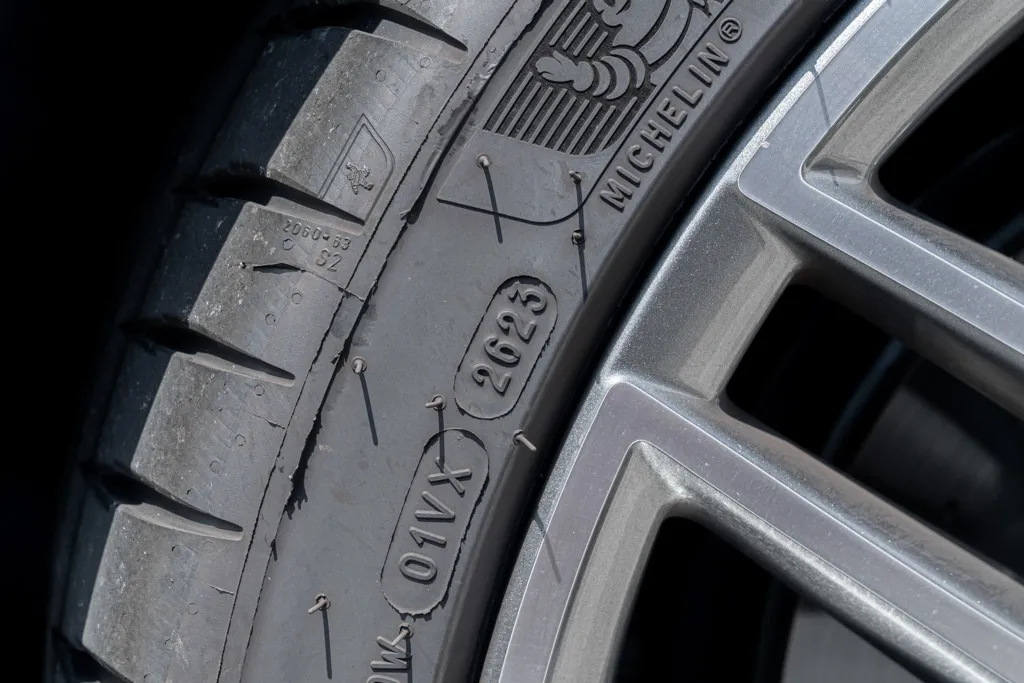
The main factors influencing how long a used tire will last are:
- Age
- Treadwear
- Damage and repairs
- Maintenance
1. Tire’s age
The age of a tire is a critical factor in determining its remaining lifespan. Even if a tire has never been used, it can still degrade over time due to environmental factors such as exposure to oxygen and UV light. Tires typically begin to experience thermo-oxidative degradation after about five years, making it essential to check the age of any used tire before purchasing.
Any tire 5 years or older has to be fully diagnosed every year and changed once deep cracks appear on its sidewalls or tread. So, if you’re looking for a used tire, a 2—or 3-year-old one will do fine. Tires over 10 years old can fail at any moment, as the rubber is too old to hold together. It starts to deteriorate the day the tire is released from the plant.
The National Highway Traffic Safety Administration and the Rubber Manufacturers Association don’t give an exact tire expiration age. However, in 2014, NHTSA released a document showing they are working on the issue. Vehicle manufacturers recommend changing tires once every 6 years, while tire manufacturers, like Michelin, say used tires last up to 10 years.
Determining the tire’s age
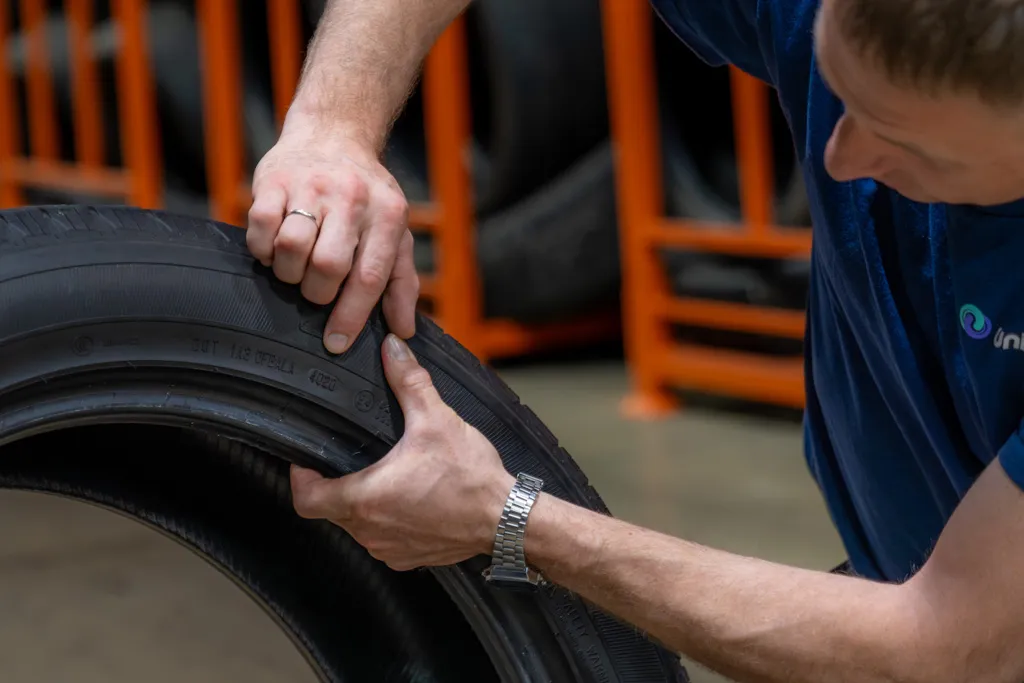
To determine the age of a tire, look for the DOT (Department of Transportation) code imprinted on the tire’s sidewall. This code, also known as the Tire Identification Number (TIN), provides information about the tire’s manufacture date. You can determine tire age by looking at the DOT code on its sidewall. The last four digits are the week and the year the tire was manufactured. So, if you look at a tire with the code 4708, this will mean the tire was made during the 47th week of 2008. Such a tire is already too old to buy unless it’s in perfect condition and you only need it for a maximum of one year.
You can learn more about tire date codes from this article.
2. Treadwear
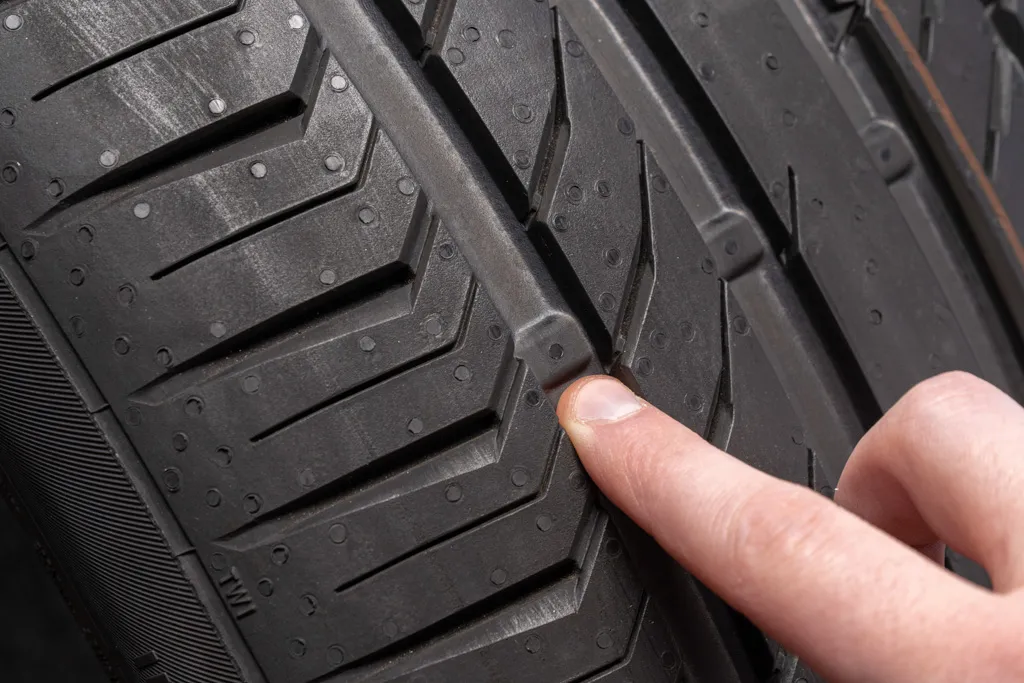
Tread depth is a crucial factor in determining the safety and performance of used tires. Used tires generally have lower tread depth than new tires, meaning they must be replaced sooner. It’s essential to check the tread depth regularly and ensure it meets the minimum legal requirements. Tires with a tread depth at or below 2/32” should be removed from service. With the tread 2/32″ or less, the braking distance increases, the vehicle’s response worsens, and the tires may fail. To get adequate service from used tires, aim at 7/32” or more. Learn more about used tire tread and other things you must know from this post.
Also, pay attention to the Uniform Tire Quality Grade (UTQG) rating on the tire. It indicates three aspects: traction, treadwear, and temperature. The word “treadwear” and the three-digit number following it are what you should look for. The bigger the number is, the longer the used tires last and the harder their rubber is. For example, treadwear 400 will mean every 1/32” wears every 8,000-10,000 miles on average, but these indicators strictly depend on the driving conditions. However, hard rubber provides a rather rough ride, while softer rubber performs better and soothes the move.
Uneven wear
Irregular wear indicates a number of neglected vehicle issues. The wheels may be misaligned, the tires imbalanced, the suspension worn out, etc. Used tires last much less time if they are worn unevenly. If one part of the tread wears beyond the legal limit, the tire’s performance will deteriorate dramatically. Plus, irregular wear may cause vehicle vibration, suspension failure, and other dangerous issues.
How long winter tire tread lasts?
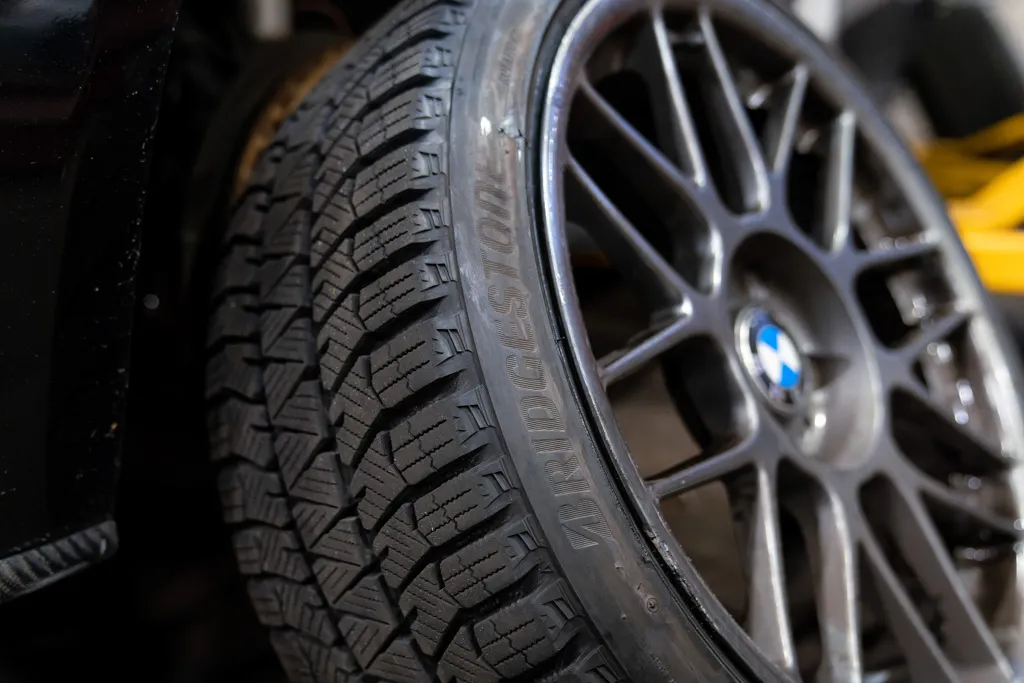
It’s important to remember winter tires should be considered worn out at 4/32”. They catch onto the snow with the help of special thin grooves called sipes. When these grooves become shallower, they don’t catch as successfully, so the tire will start to slide. Eventually, braking and cornering will become more difficult, and it will be easier to lose control of the vehicle. Winter tires are designed with a softer and more flexible rubber compound to maintain grip in cold conditions.
Typically, they last between 20,000 and 40,000 miles, depending on driving style and road conditions, but that strictly depends on a particular driving situation. The deeper tread grooves and more complex tread blocks on winter tires enhance traction on icy or snowy surfaces, making them essential for safe winter driving. However, this softer rubber can wear out faster than all-season or summer tires.
How long summer tire tread lasts?
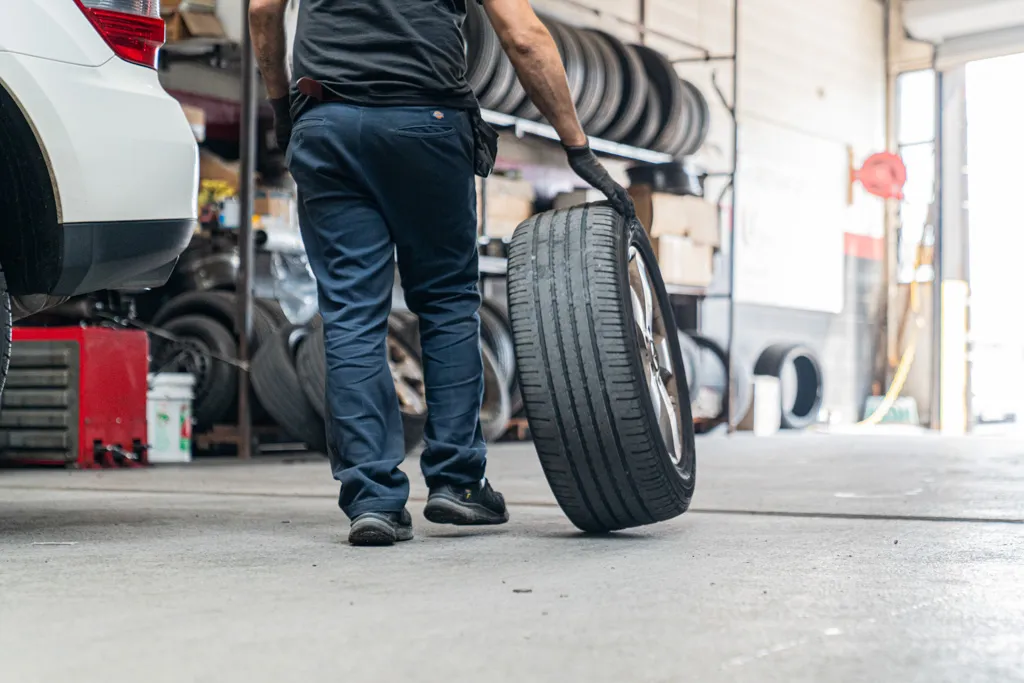
Summer tires are designed for optimal performance on dry and wet roads during warmer months. Depending on driving habits and weather conditions, these tires usually last between 30,000 to 50,000 miles. Summer tires excel in performance on dry surfaces but are less effective in snow and ice.
Regularly checking for tread wear indicators, which appear as solid bands across the tread, can help determine when it’s time to replace summer tires.
How long all-season tire tread lasts?
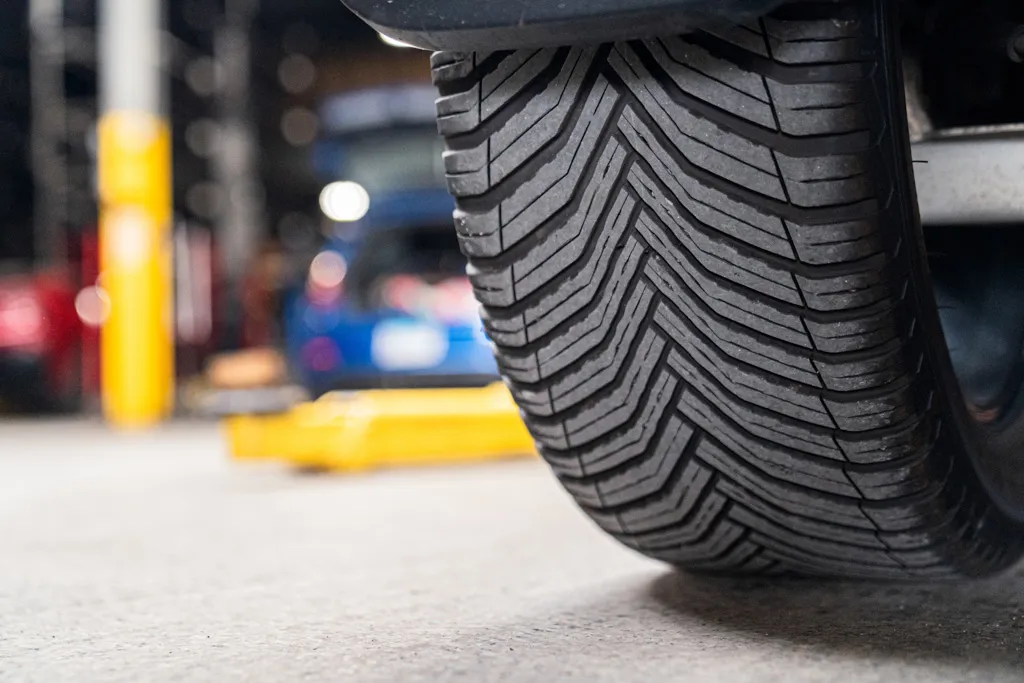
All-season tires offer a balance of performance in various weather conditions and typically last between 50,000 to 60,000 miles. High-quality all-season tires generally last between three to five years, based on typical annual mileage.
Factors such as driving style, maintenance, and road conditions significantly determine the lifespan of all-season tires. Regular maintenance and proper use can help maximize their longevity.
3. Damage and repair
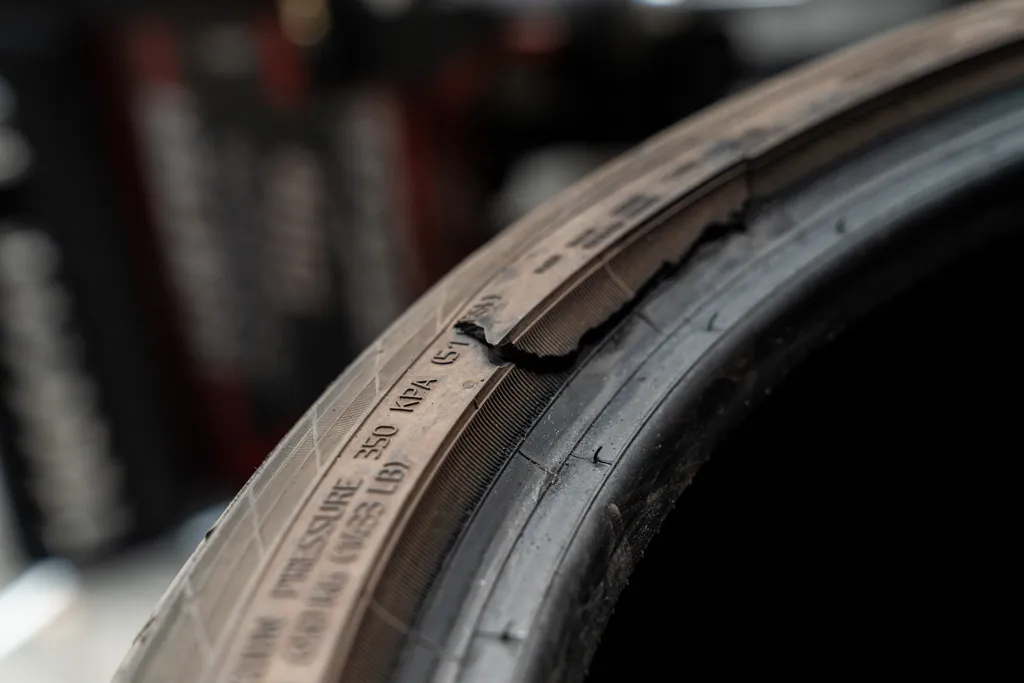
The most frequent damage you need to pay attention to are cuts, holes from plugs, bulges, and cracks. While plug holes can be repaired, other damages are rarely reparable. There are also other serious issues to be aware of, such as:
- Exposed cords
Severe irregular wear can make steel cords show on the surface. This is a serious issue that may cause tread separation. - Belt separation
Bumps or bulges on the sidewall may indicate internal damage—specifically, a damaged carcass. It usually happens when the vehicle drives over a large curb or pothole at a high speed. - Bead chunking
Consider the tire dangerous if chunks of rubber are missing from the bead area. As the damage expands, the bead may come off the rim at any moment. Plus, such a tire will lose more air than the others, which may result in a blowout. - Liner damage
Any damage to the liner may cause air loss, a sidewall collapse, etc. The tire may just fold and immediately fail. Also, if you find rubber dust inside the tire, it’s probably damaged, as the sidewalls were scrubbing themselves off at some point. - Cracks — especially groove cracks.
As for repairs, used tires last longer without them. However, if the tire is in perfect condition but has one repaired plug, it may still serve well. But keep in mind that other damage usually isn’t reparable, so if you see a sealed crack or cut, don’t buy such a tire.
Why do tires get damaged? 7 key factors
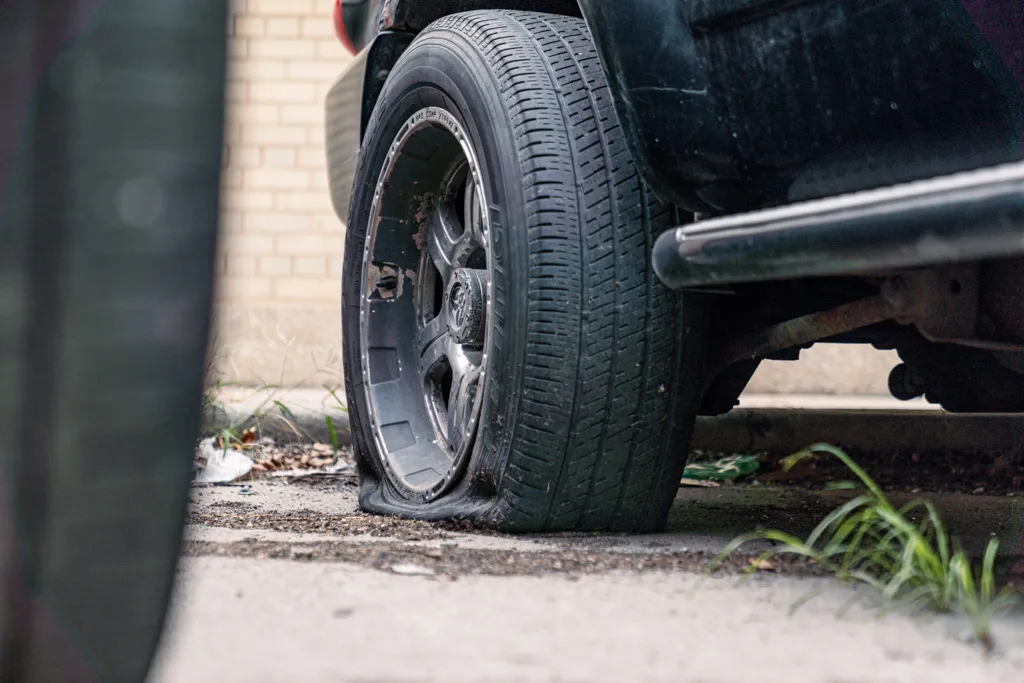
Tires can get damaged due to various factors, including:
- Hitting obstacles like potholes and curbs
- Driving over sharp objects such as nails or screws
- Extreme temperatures, both hot and cold, can accelerate tire wear and lead to premature cracking and other issues
- Excessive exposure to ozone, oxygen, oil, and harmful chemicals can degrade the rubber and shorten tire lifespan.
- Improper maintenance, such as under-inflation or over-inflation, can cause irregular tire wear and damage.
- Driving habits like rapid acceleration, hard cornering, and braking can also contribute to tire wear.
- Wrong tire choice. Using tires in inappropriate conditions, such as winter tires in summer or street tires off-road can lead to premature damage and failure. Regular maintenance and proper usage are essential to prevent these issues and extend tire life.
4. Previous maintenance
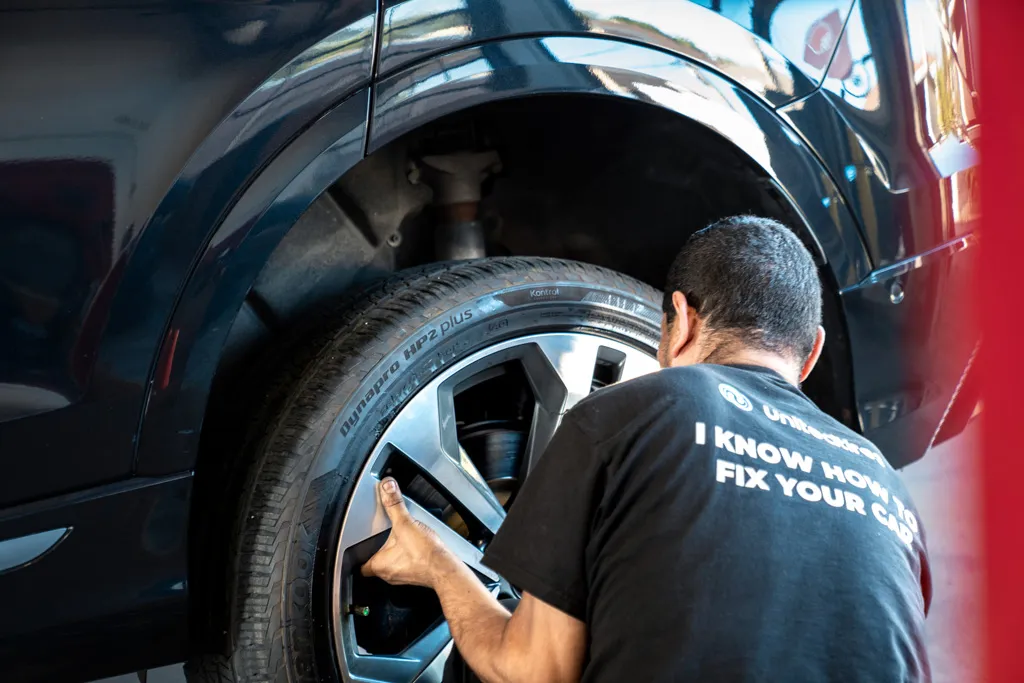
The lifespan of used tires is significantly influenced by how well their previous owner maintained them. Neglected maintenance can reduce tire lifespan by as much as half. Heel and toe wear, where tread blocks wear unevenly, often results from improper tire rotation and can necessitate tire replacement. Proper maintenance practices, such as regular tire rotations, balancing, and wheel alignment, help to extend the life of used tires.
Both past and future maintenance are essential for maximizing tire longevity. Here are some tips to help you maintain your tires:
- Make sure that tires are balanced and aligned correctly to prevent uneven wear and damage.
- Follow an appropriate tire rotation schedule, typically every 5,000 to 8,000 miles, to promote even tread wear and extend tire life.
- Regularly check and maintain proper tire inflation to prevent premature wear and maintain structural integrity.
Signs it’s time to replace your used tires

Knowing when to replace used tires is essential for maintaining safety and performance. Here are some indicators that it’s time to replace your tires:
- Tread depth at or below 2/32”: This is a critical threshold at which tires must be replaced due to safety concerns. Tread wear indicator bars become flush with the tread at 2/32” and can show when tires need replacing. You can also use a tire tread depth gauge, which will precisely measure tread depth, helping determine the right time for tire replacement.
Additionally, many carmakers and experts recommend the following:
- Replacing tires between five and six years from the manufacturing date, regardless of remaining tread depth. The rubber in tires ages over time, which can make used tires unsafe.
- Regularly inspecting tires for any signs of damage or unusual wear, such as vibrations while driving, which can signal possible tire damage or imbalance.
- Verifying the DOT number to determine the tire’s age and ensure they are not older than ten years.
Extending the life of used tires
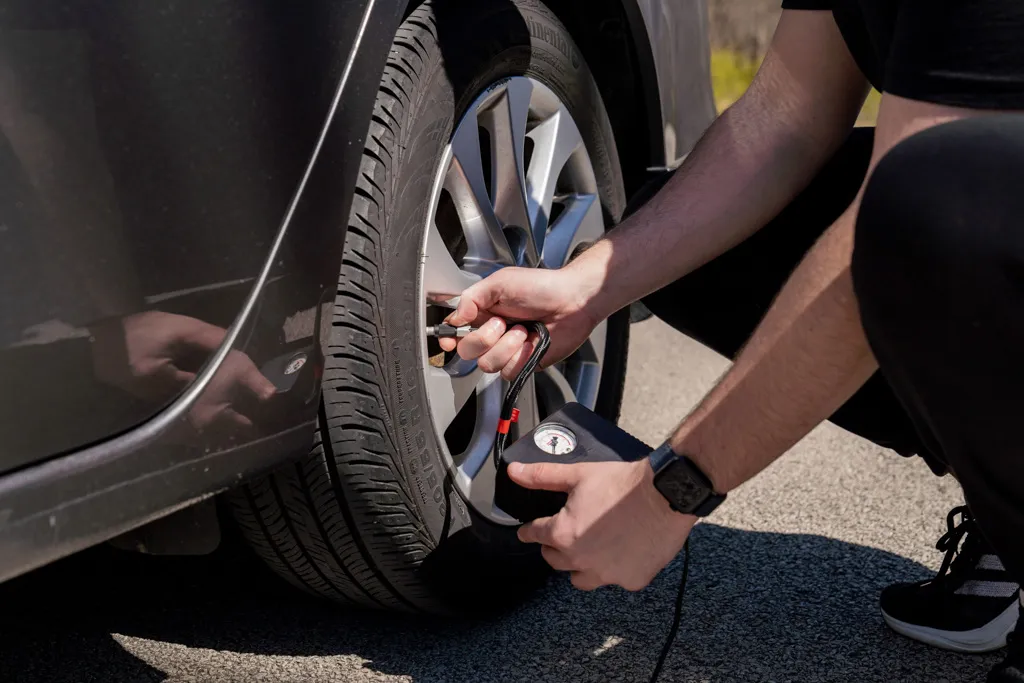
Proper maintenance
Proper maintenance practices can significantly improve tire longevity. This includes:
- Regularly checking air pressure
- Checking tread depth
- Balancing and aligning tires
- Performing regular tire rotations
Driving style adjustments
Many drivers may not realize how their driving habits affect tire longevity. Driving style significantly impacts tire wear. Aggressive driving habits increase tire wear, such as hard cornering and rapid acceleration. Avoiding these aggressive driving tactics can prevent undue stress on tires and help extend their lifespan. Smooth acceleration and steady steering inputs are essential for prolonging tire life.
Storage tips
Here are some expert tips for properly storing your tires:
- Store tires in a cool, dry location to prevent rubber degradation.
- Placing tires in airtight plastic bags can minimize oil evaporation and extend their lifespan.
- Keep tires out of direct sunlight to avoid UV damage.
Additionally, storing tires vertically can reduce stress and prevent distortion. Following these storage tips can help maintain your tires’ structural integrity and performance.
Pros and cons of buying used tires
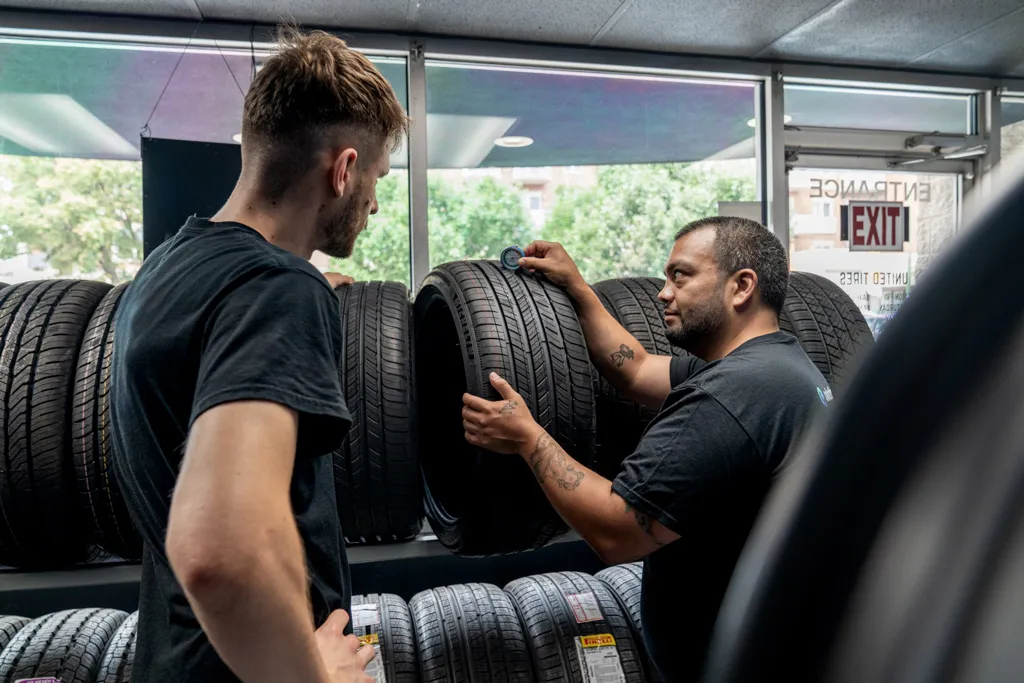
Buying used tires can offer significant cost savings but also come with potential drawbacks. Here are some things to consider:
- Used tires can save you up to 65% of the cost of new tires, making them an attractive option for budget-conscious drivers.
- However, used tires often come without a warranty, and their history, including previous maintenance and usage conditions, may be unknown.
- Wear and tear on pre-owned tires can increase the risk of traction loss or blowouts.
Pros
The primary benefit of buying used tires is the cost savings. Used tires are significantly less expensive than new ones, potentially saving you up to 65%. Other advantages include immediate availability and the potential environmental benefits of reducing waste by reusing tires.
Cons
However, buying used tires also has its drawbacks. Here are some potential issues to consider:
- The history of used tires is often unknown, making it difficult to assess their past maintenance and any potential hidden damage.
- Used tires typically do not come with a warranty, increasing the buyer’s risk in case of premature failure.
How to safely purchase used tires
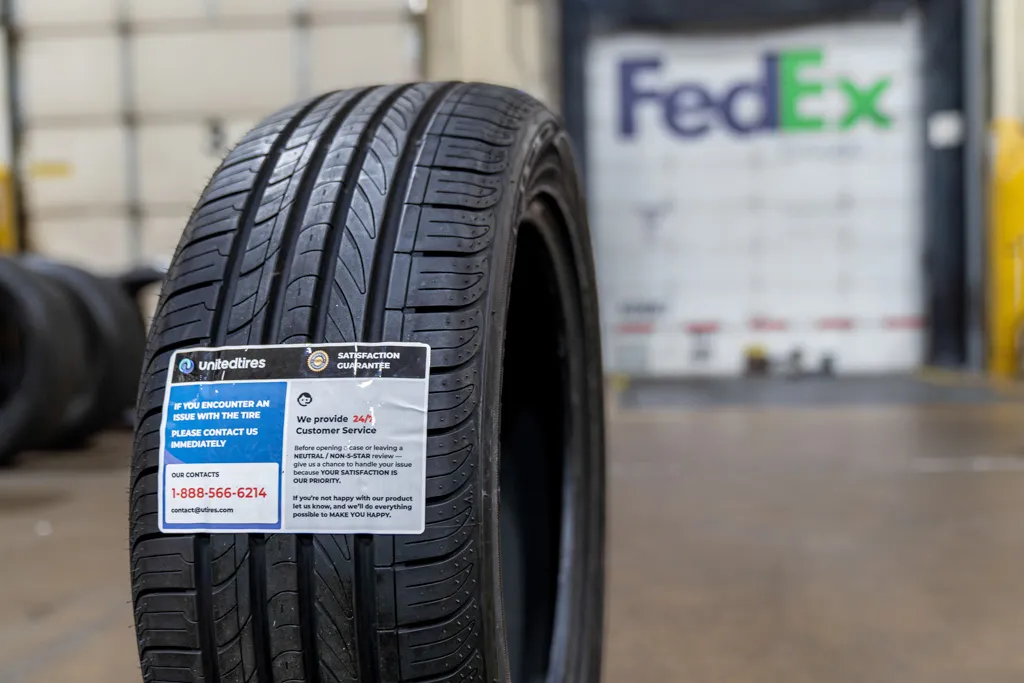
Safely purchasing used tires involves inspecting them thoroughly, buying from reputable sellers, and ensuring they are matching sets. By following these steps, you can reduce the risks associated with used tires and ensure you get a safe and reliable product while tire shopping.
Inspect thoroughly
When inspecting used tires, use the penny test to check tread depth. The tire is legally bald and should not be used if Lincoln’s head is visible. Look for bumps or irregularities on the sidewall and tread surface, which could indicate belt separation. Check for bead chunking, where pieces of rubber are missing from the tire beads, affecting the tire’s sealing ability.
Examine the inner liner of the tire for damage or exposed cords, which can compromise tire safety. Avoid tires with improper repairs like plug-only fixes, and opt for tires with full patches. Checking the tire’s DOT number to determine its age and avoiding tires older than six years is also essential for safety.
Importance of buying used tires from a reputable shop
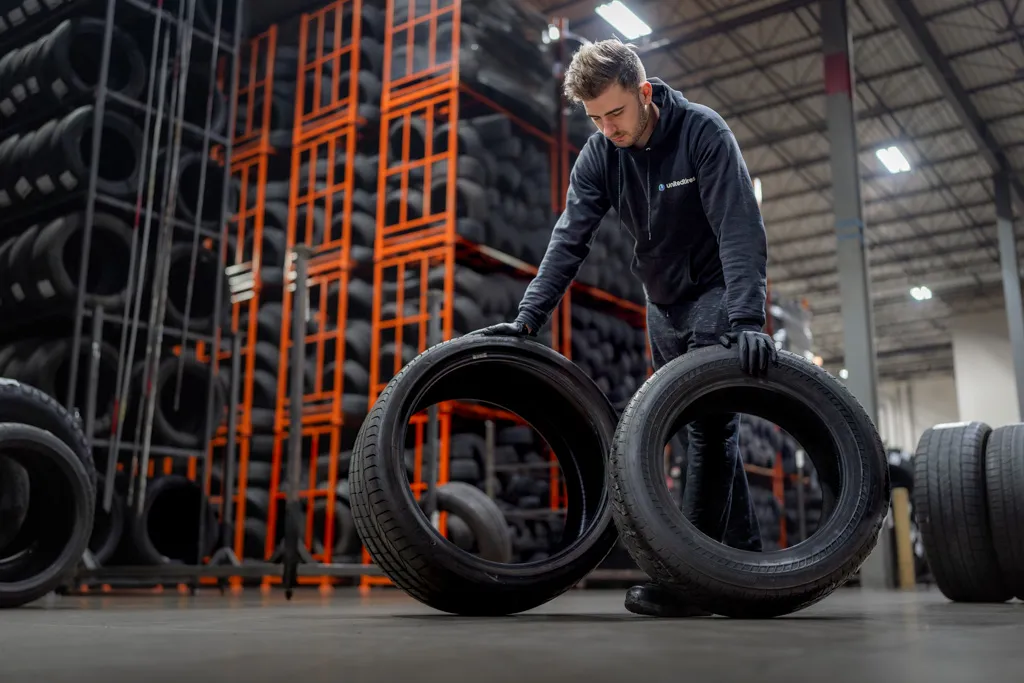
Purchasing used tires from a reputable retailer is extremely important. At United Tires, we guarantee the high quality of all our used tires. Each used tire undergoes a meticulous three-step inspection, manual and instrumental, on state-of-the-art equipment. We simply don’t sell used tires!
If you’re unhappy with your purchase, you can always ship them back within 365 days and get a full refund. If you bought a damaged tire from us, please take the photos and send them to our customer support within 48 hours after the purchase: we’ll inspect your case and issue a full refund or same-price category replacement! Shopping with United Tires is easy. If you have any questions, call our 24/7 customer support at 1-888-566-6214.
Matching sets
Ensuring that all tires have similar wear levels and are from the same brand contributes to balanced performance and safety. Using tires from the same brand helps maintain consistent performance characteristics.
A matching set of rear tires, including spare tires, allows for regular rotation, ensuring even tread wear and improving vehicle safety by enhancing road grip and stability.
How long used tires last if unused?
Stored used tires last for the same amount of time as tires you mount on your vehicle—a maximum of 10 years from their manufacture date. Rubber ages independently of use, as the process of oxidation happens regardless of use.
There are two factors influencing the tire’s lifespan in this case:
- Environmental conditions
Oxygen, ozone, ultraviolet light, and heat make rubber age and dry. The more these factors present, the faster the tire becomes unfit for use. - Storage conditions
The amount of light, temperature in the storage room, humidity, and tire deformation influence tire condition. Exposure to environmental conditions is also a part of storage. The hotter and lighter a tire is, the faster it ages. The more vdeformation there is (if tires lie in a pile or hang without rims), the faster the damage will occur.
NOTE: Any operated tire will serve less than a tire stored under normal conditions!
How to make used tires last longer?
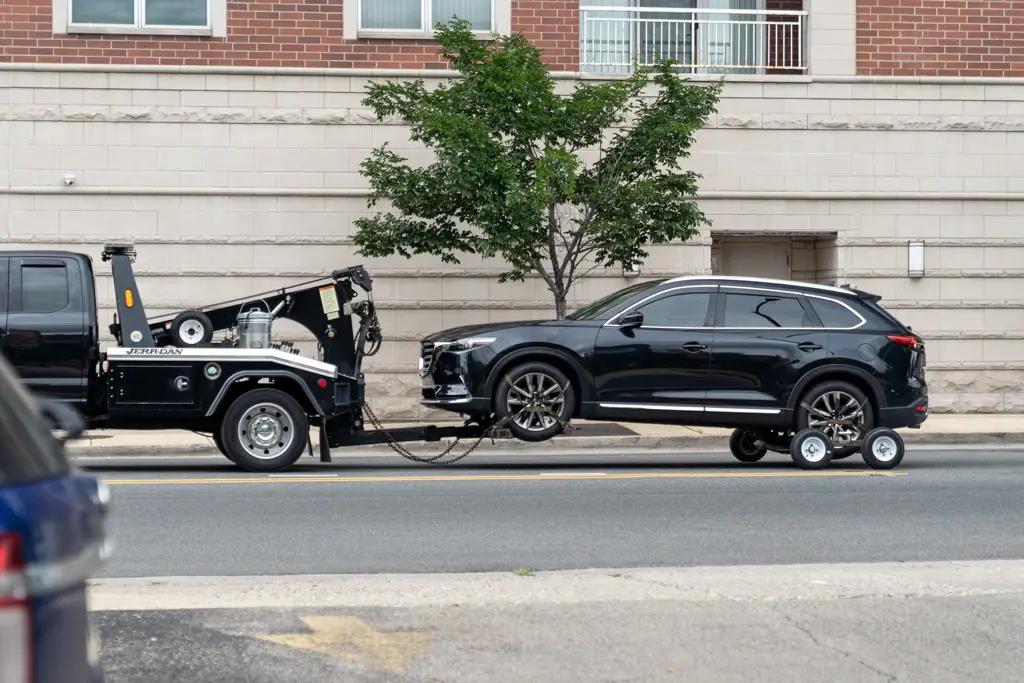
Here is a list of actions that will help you extend your used tires’ lifespan:
- Check air pressure regularly
Some people recommend checking tire pressure every 3,000 miles, while others insist on doing it weekly. It depends on the roads you drive on and the symptoms of your tires. For example, if you notice a tire loses air slowly yet faster than the others, check the pressure more often.
Proper inflation can improve fuel efficiency by up to 3%. Nowadays, checking the inflation rate isn’t difficult due to the Tire Pressure Monitoring System, which is required on all vehicles manufactured after 2007.
- Rotate your tires
Rotate your used tires every 5,000-8,000 miles to make them last longer. Also, look at the tires thoroughly while rotating, as minor damage may become a serious issue. Remember to choose the right rotation pattern for the tires, depending on whether they are directional and the same size. - Balance your tires
Balance the tires with each rotation. Over time, the weight distribution around the tire changes, requiring a new balance. It’s important to provide balance to avoid vehicle vibration and other related issues. - Don’t excessively expose your tires to UV and ozone
Some exposure is inevitable, but to make the used tires last longer, control the climate in your garage. Storing tires in a cool, dark place in special tire totes will also help. When not at home, park the car in the shade. - Wash your tires
Follow special techniques and rules of tire cleaning to achieve the best results. The easiest way to clean your tires is to change the water every time you wash or rinse one tire. Another rule is to dry clean them first and then apply water. Keep in mind that some cleaning substances promote tire drying, so make sure you choose the appropriate cleaners.
Buying used tires: yes or no?
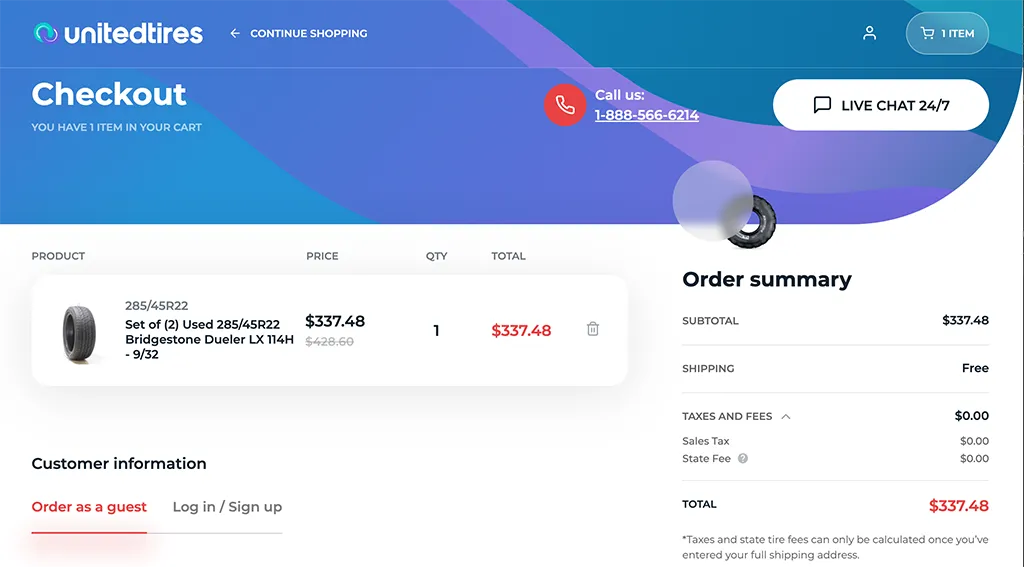
Used tires last almost as long as new ones if you check them for damage, uneven treadwear, etc., before buying. They will also save you money, as you can often find a set that usually costs $1000 for just $200. Furthermore, you will be helping the environment, as millions of reusable tires are thrown away every year. Learn more about the benefits of buying used tires.
However, keep in mind that used tires have no warranty, so you don’t know for sure what you are buying. Some sellers may lie about the maintenance they provided on the tires and any internal damage. The tire code may be scrubbed off, preventing you from learning its real age. Anything suspicious may mean there’s an issue with the tire you are about to buy, so be cautious. Learn more about the drawbacks of buying used tires.
Considering all the pros and cons, the used tire market is blooming. About 30 million second-life tires are sold annually, 10% of the whole tire market.
Understanding the lifespan and maintenance of used tires is crucial for ensuring safety and performance. Key factors such as age, treadwear, damage, and maintenance history significantly influence tire longevity. Regular maintenance, proper storage, and mindful driving habits can extend the life of your used tires. By considering the pros and cons of buying used tires and following tips for safe purchasing, you can make informed decisions that ensure your tires serve you well. Safety should always be your top priority!
Shop wisely, and don’t forget that choosing a reputable used tire retailer is key when buying used tires! If you have any questions, the United Tires customer support crew is always here to help. Just dial 1-888-566-6214. We’re available 24/7!
Frequently Asked Questions
How can I determine the age of a used tire?
You can determine the age of a used tire by looking at the DOT number on the tire’s sidewall. The last four digits show the week and year of manufacture.
What is the minimum legal tread depth for tires?
The minimum legal tread depth for tires is 2/32”. Tires with tread depth below this level should be replaced to ensure safety on the road.
How often should I rotate my used tires?
You should rotate your used tires every 5,000 to 8,000 miles to ensure even wear and maximize their durability.
What are the benefits of buying used tires?
Buying used tires can save you up to 65% of the cost of new tires and also have environmental benefits by reducing waste. It’s a cost-effective and eco-friendly choice.
What should I look for when inspecting used tires?
When inspecting used tires, look for proper tread depth, visible damages, and the DOT number to determine the tire’s age. Avoid tires with improper repairs.

